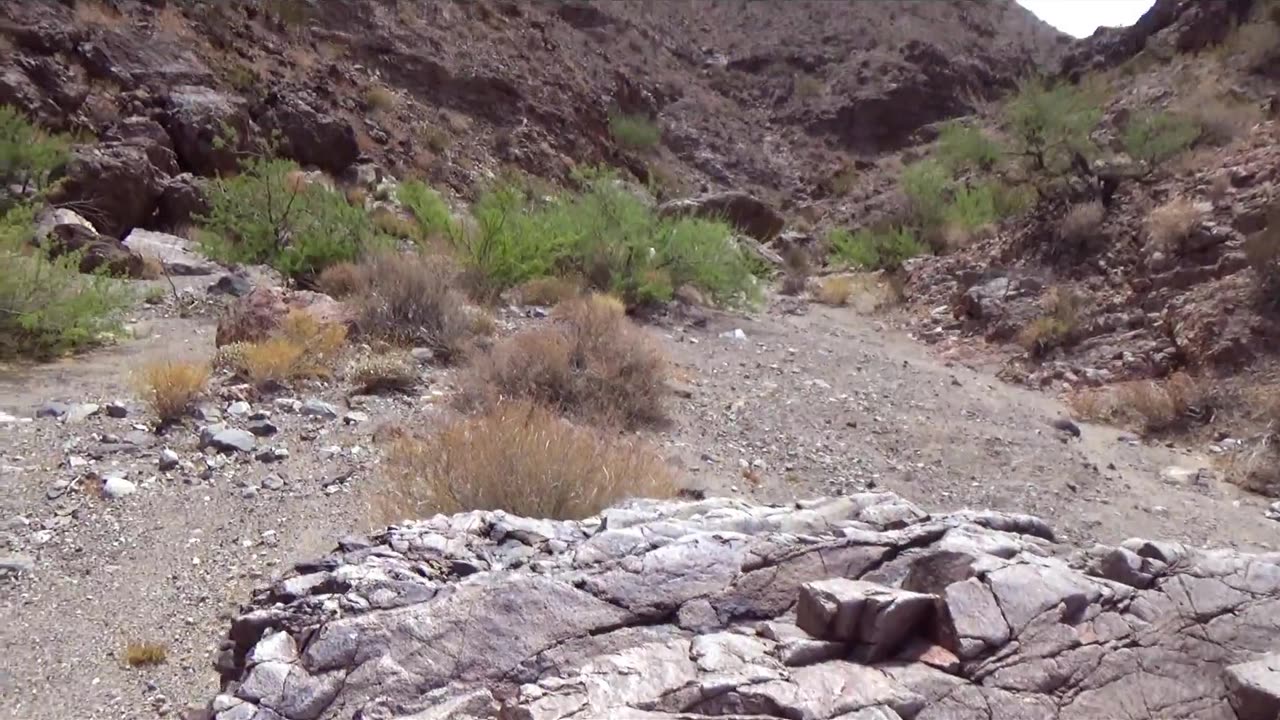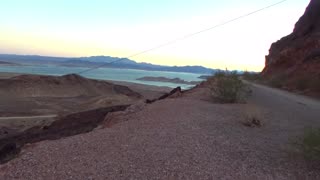Premium Only Content

Crossed the Line and Headed for a Fall
35.983675,-114.788198
Andesitic basalt atop pluton of quartz monzonite covered in alluvial gravels cemented by caliche. Every step closer to the end.
Tsmo - Older intermediate-age sedimentary rocks (middle Miocene)—Sandstone, mudstone, siltstone, limestone, gypsum, and conglomerate. Deposited in fault-controlled basins and subsequently faulted and folded. Inferred to be about 12 to 16 Ma in age. Unit lies between andesite lava and breccia of lower part of Patsy Mine Volcanics (Tpl) with an 40Ar/39Ar age of 15.72±0.03 Ma and a basalt flow of upper Mount Davis Volcanics (Tdmu) with an 40Ar/39Ar age of 12.73±0.3 Ma.
Tdmm - Mafic lavas—Modified from Anderson (1977, 1978). Varies from aphanitic to porphyritic. Outcrops previously mapped as Fortification Basalts west of Colorado River (units Tmf, Tmfc, and Tmfq of Ekren and Anderson, 1996, and unit Tmf of Anderson, 1977, 1978) have been assigned to this unit based on stratigraphic relations and geochronology. A new 40Ar/39Ar age of 13.268±0.032 Ma (appendix 1) was obtained from basalt sample collected about 1.5 miles northeast of Boulder City from outcrops that had previously been mapped as Fortification basalt (Anderson and Ekren, 1996; Anderson, 1977).
Tibu - Boulder City pluton, undifferentiated (middle Miocene)—Large composite epizonal batholith exposed mostly northeast and east of Boulder City. Bulk of pluton is quartz monzonite with lesser amounts of granite, monzonite, and syenodiorite (Ekren and Anderson, 1996). Quartz monzonite is mostly light gray, fine to medium grained, faintly to distinctly porphyritic, nonfoliated pyroxene bearing, with biotite and hornblende as important mafic constituents. Rocks either more mafic or more siliceous than quartz monzonite occur mostly as fine-grained to aphanitic dikes and border facies in Boy Scout Canyon area and in outcrops east and southeast of Boulder City. Sub-horizontal bands at about 700 m elevation, interpreted by Anderson (1969) to represent a paleohydrologic feature, are formed by strong concentrations of hematite. A new U-Pb age of 13.96±0.25 Ma was obtained from this unit; previous K/Ar analyses of biotite yielded ages of 14.17±0.6 Ma (recalculated; Anderson and others, 1972) and 14.65±0.47 Ma (recalculated; R. Fleck, U.S. Geological Survey, written commun., 2008)
Free 1977 USGS Geo Map and Google Earth KMZ:
https://ngmdb.usgs.gov/Prodesc/proddesc_10930.htm
Free Updated Geologic Map of the Black Canyon Area:
https://pubs.usgs.gov/of/2013/1267/a/
Camera: $200 Sony CX405 with slight color edit for outdoor reddish tint.
Martin Blok (Ry Cooder) Music on YouTube:
https://www.youtube.com/watch?v=IRQYdin603M
-
 3:03
3:03
Rocks of Eldorado NV
1 month agoGrapes of Wrath
131 -
 1:06:17
1:06:17
Graham Allen
3 hours agoFAKE NEWS Is Everywhere!! Are We Living In The Upside Down?!
115K421 -

Wendy Bell Radio
6 hours agoFeeding Their Greed
46.1K75 -

Badlands Media
9 hours agoBadlands Daily: November 26, 2025
31.9K4 -
 1:13:11
1:13:11
Chad Prather
18 hours agoGratitude That Grows in Hard Ground: A Thanksgiving Message for the Soul
68.4K40 -
 LIVE
LIVE
LFA TV
14 hours agoLIVE & BREAKING NEWS! | WEDNESDAY 11/26/25
4,046 watching -
 1:59:03
1:59:03
The Chris Salcedo Show
14 hours ago $11.63 earnedRemembering Rush On A Truly American Holiday
30.9K2 -
 36:24
36:24
Julie Green Ministries
5 hours agoLIVE WITH JULIE
102K218 -
 1:05:27
1:05:27
Crypto Power Hour
13 hours ago $9.94 earnedWhat You Need To Know About Gold Tokenization
66.9K8 -
 1:46:14
1:46:14
LIVE WITH CHRIS'WORLD
14 hours agoTHE WAKE UP CALL - 11/26/2025 - Episode 14
30.8K2